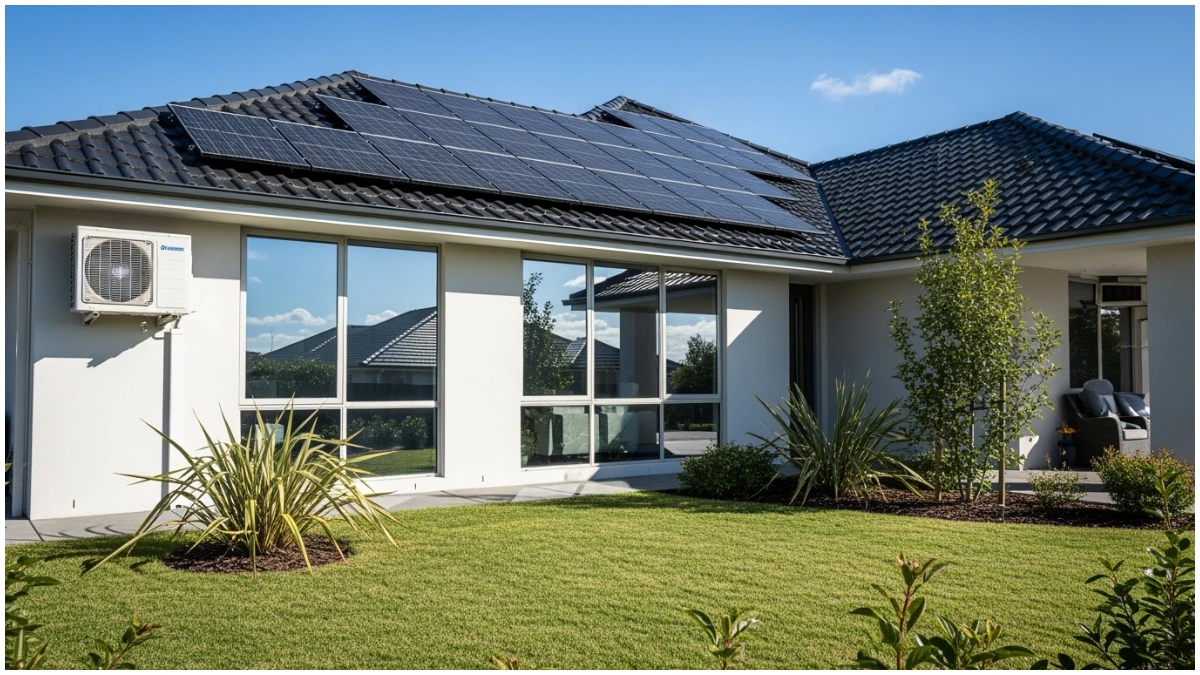Rising energy costs and growing environmental concerns are driving more people than ever to rethink how they power their homes. The good news? Making your home energy-efficient doesn’t require a complete overhaul or breaking the bank. From simple fixes like sealing drafts to bigger upgrades like installing solar panels, every step you take can slash your energy bills, boost your comfort, and reduce your carbon footprint.
Hi, I’m Katrina, and I’m passionate about helping people transform their living spaces into sustainable, comfortable havens. Whether you’re a homeowner, renter, or somewhere in between, this guide will walk you through practical, actionable ways to make your home more energy-efficient—no matter where you are in the world. Ready to start saving money while helping the planet? Let’s dive in.
Understanding Energy Efficiency: Why It Matters
Global impact: The residential sector accounts for approximately 26% of final energy consumption across developed nations, making homes a critical frontline in the fight against climate change. When you improve your home’s energy efficiency, you’re not just reducing bills—you’re actively contributing to a cleaner environment and more sustainable future.
Financial benefits: Installing proper insulation alone can reduce heating and cooling costs by up to 45%. These aren’t abstract numbers—they translate to hundreds or even thousands of dollars saved annually. These savings accumulate year after year, making energy efficiency improvements some of the most financially rewarding home upgrades you can make.
Comfort and health: Energy-efficient homes maintain consistent temperatures year-round, eliminating cold drafts in winter and oppressive heat in summer. Better insulation and ventilation also improve indoor air quality, reducing respiratory problems and creating a healthier living environment for your family.
Future-proofing your investment: As energy efficiency standards tighten globally and buyers increasingly prioritize sustainable features, an energy-efficient home becomes more valuable on the real estate market. Properties with documented energy improvements often sell at a premium and attract more interest from environmentally conscious buyers.
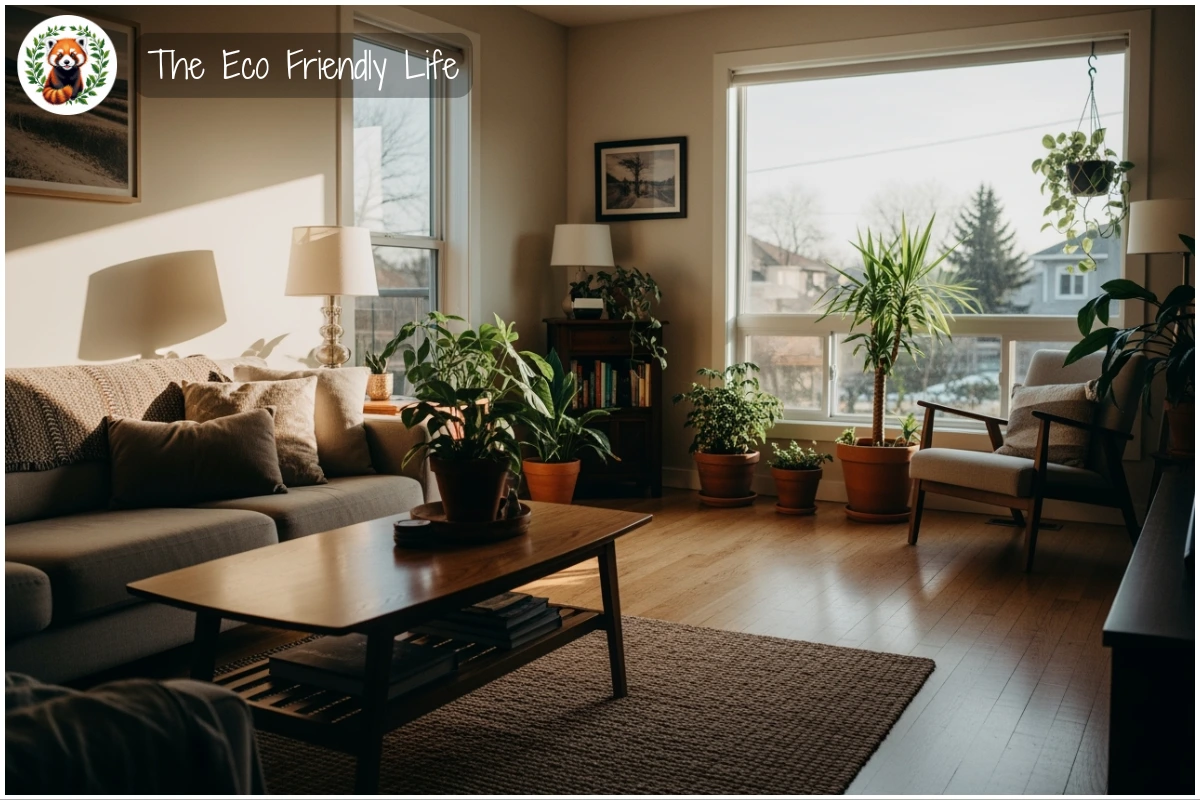
The journey to energy efficiency starts with understanding that every home is different, but the principles remain universal. Small changes add up, and you don’t have to tackle everything at once. Let’s start with one of the simplest yet most effective improvements.
Sealing Your Home’s Envelope
Stop air leaks first: Before investing in expensive heating or cooling systems, address the easiest and most cost-effective improvement—stopping unwanted air from entering or escaping your home. Air leakage can account for significant energy waste, allowing conditioned air to escape and forcing your heating and cooling systems to work overtime. The beauty of draught proofing is that most of it can be done yourself with basic materials from any hardware store.
Identify the culprits: Common sources of air leaks include gaps around doors and windows, cracks in walls, unsealed electrical outlets, ceiling exhaust fans, and fixed wall vents found in older homes. Walk through your home with a lit incense stick or candle and watch for telltale flickers near suspected areas—this simple trick reveals exactly where your heated or cooled air is escaping.
Door and window solutions: Install weather stripping around door and window frames, which creates a tight seal when closed. For doors, add door sweeps or seals at the bottom to block the gap where warm or cold air most commonly escapes. These materials are inexpensive and can be installed in an afternoon, yet they make an immediate difference in your home’s comfort level.
Seal construction gaps: Use caulking compounds or silicone sealants to fill cracks between bricks, around plumbing penetrations, and along rooflines. These small gaps may seem insignificant individually, but collectively they can equal leaving a window wide open. Choose weather-resistant silicone sealants for exposed exterior areas and latex-based caulk for interior applications.
Address forgotten spots: Don’t overlook ceiling exhaust fans, which often remain unsealed to outside air. Install self-closing lids that blow open when the fan operates and fall shut when it stops. Old fixed wall vents, no longer required under modern building regulations, can be permanently sealed with caulking compound or covered with clear contact adhesive—just ensure you maintain adequate ventilation if you use unflued gas heaters.
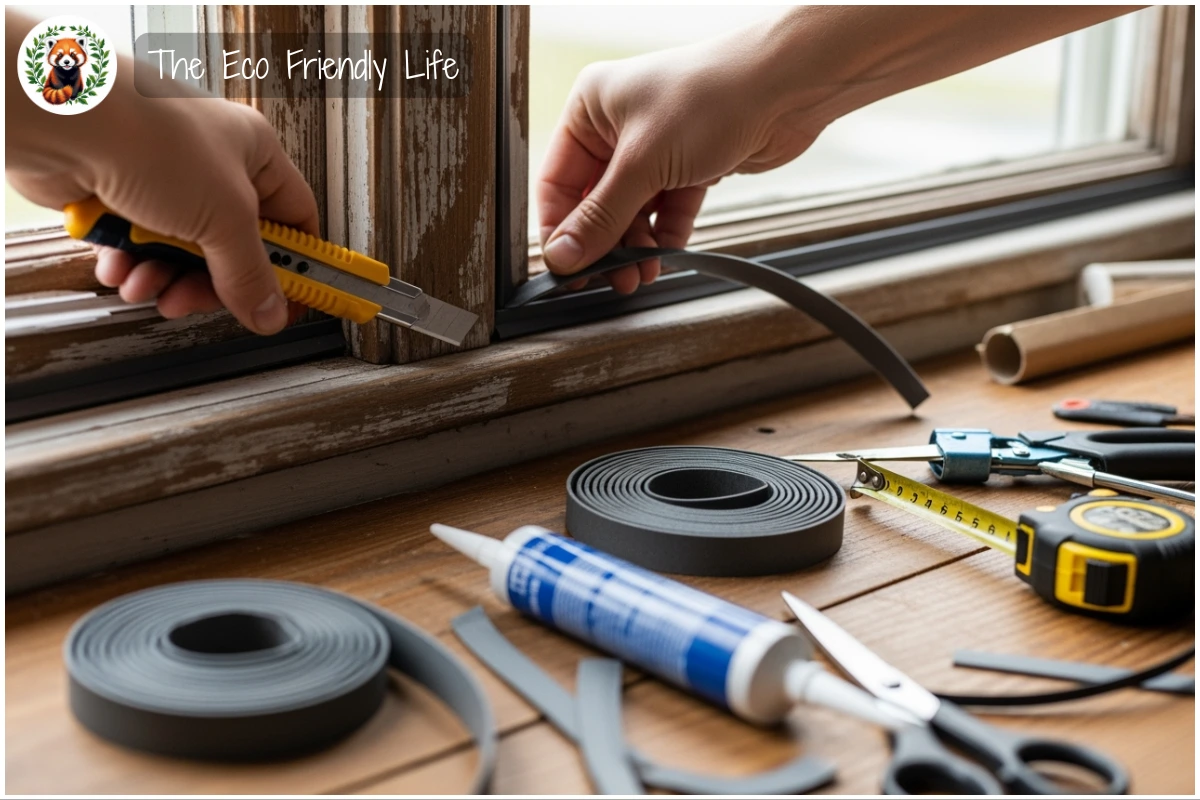
Once you’ve sealed your home’s envelope, you’ve created the foundation for all other energy efficiency improvements to work more effectively. Next, let’s look at the single most impactful upgrade you can make—insulation.
Insulation: Your Home’s Thermal Blanket
Ceiling insulation priority: Your ceiling is the most important place to install insulation, as up to 40% of heat loss occurs through uninsulated roofs. Installing ceiling insulation in a previously uninsulated home could reduce heating and cooling costs by 45% or more. The return on investment is remarkable—spending $1,800 to $2,800 on ceiling insulation can save you hundreds of dollars annually for decades to come.
Wall insulation benefits: While more challenging to retrofit in existing homes, wall insulation can reduce heating and cooling costs by approximately 15%. If you’re renovating and walls are already open, adding insulation becomes much easier and more cost-effective. Options include silicon-treated rockwool or glass fiber insulation blown into existing wall cavities by professionals.
Floor insulation for suspended floors: Many older homes have suspended floors rather than concrete slabs, creating another pathway for heat loss. Insulation can be installed on the underside of suspended floors using expanding foams, rigid boards, or concertina foils. This prevents warm air from escaping downward in winter and blocks rising heat in summer.
Understanding R-values: Insulation effectiveness is measured in R-values—the higher the number, the better the insulation resists heat flow. The appropriate R-value depends on your climate and whether you’re insulating ceilings, walls, or floors. Consult with a professional or local building authority to determine the optimal R-values for your region and home type.
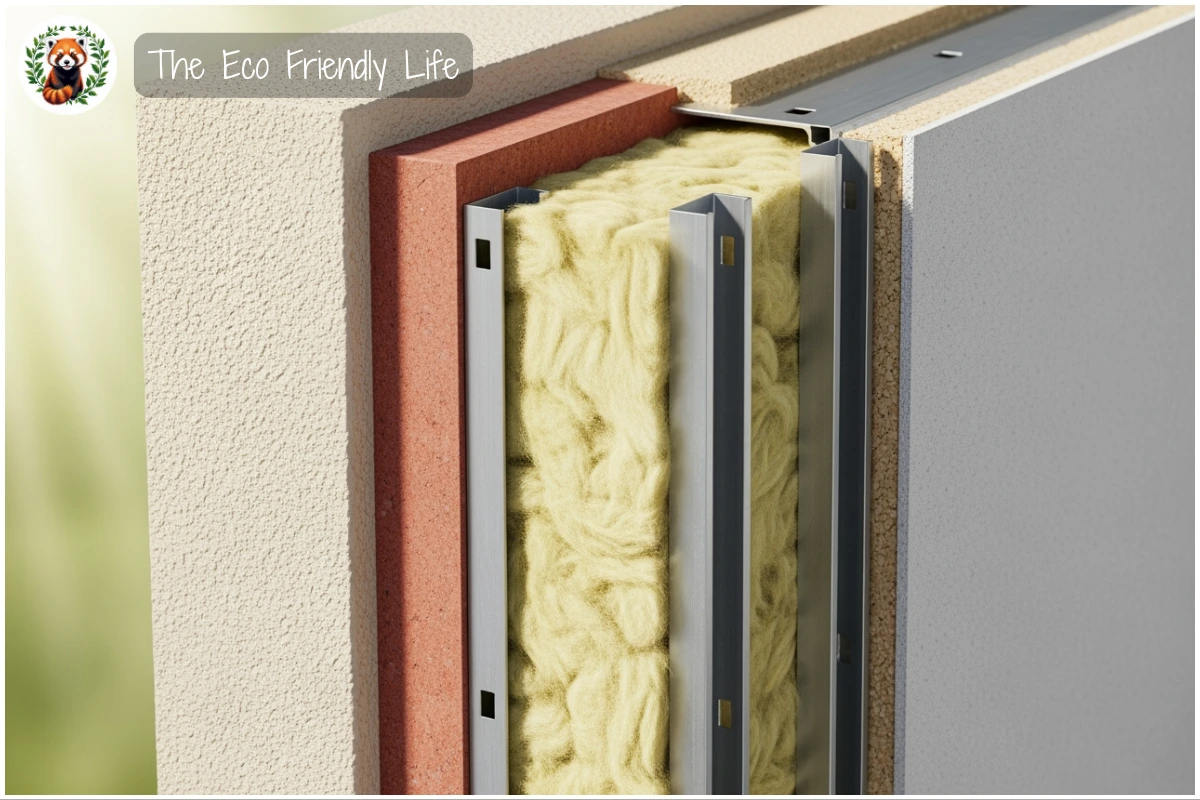
Now that your home can hold its temperature effectively, let’s look at how to reduce the energy needed to light your spaces with one of the simplest upgrades available.
Lighting: The LED Revolution
Energy savings: Switching to LED lighting represents one of the simplest and most impactful energy efficiency upgrades available. LEDs use at least 75% less energy than traditional incandescent bulbs and last up to 25 times longer. This means fewer bulb replacements, less waste, and dramatically lower electricity consumption—a single LED bulb saves approximately 80% compared to its incandescent equivalent throughout its lifetime.
Long-term value: While LED bulbs cost more upfront than traditional bulbs, their extended lifespan means you’ll replace them far less frequently. A quality LED bulb can last 25,000 to 50,000 hours—that’s potentially 20 years of use if you run it eight hours daily. When you factor in both energy savings and replacement costs, LEDs pay for themselves many times over.
Better light quality: Modern LEDs offer excellent light quality with options for different color temperatures, from warm white for cozy living spaces to bright white for task-oriented areas like kitchens and home offices. Unlike older energy-efficient bulbs, LEDs reach full brightness instantly with no warm-up period, and many are dimmable for added flexibility.
Heat reduction: LEDs emit very little heat compared to incandescent bulbs, which release 90% of their energy as heat rather than light. This means your cooling system doesn’t have to work as hard to counteract heat from lighting, leading to additional energy savings during warm months.
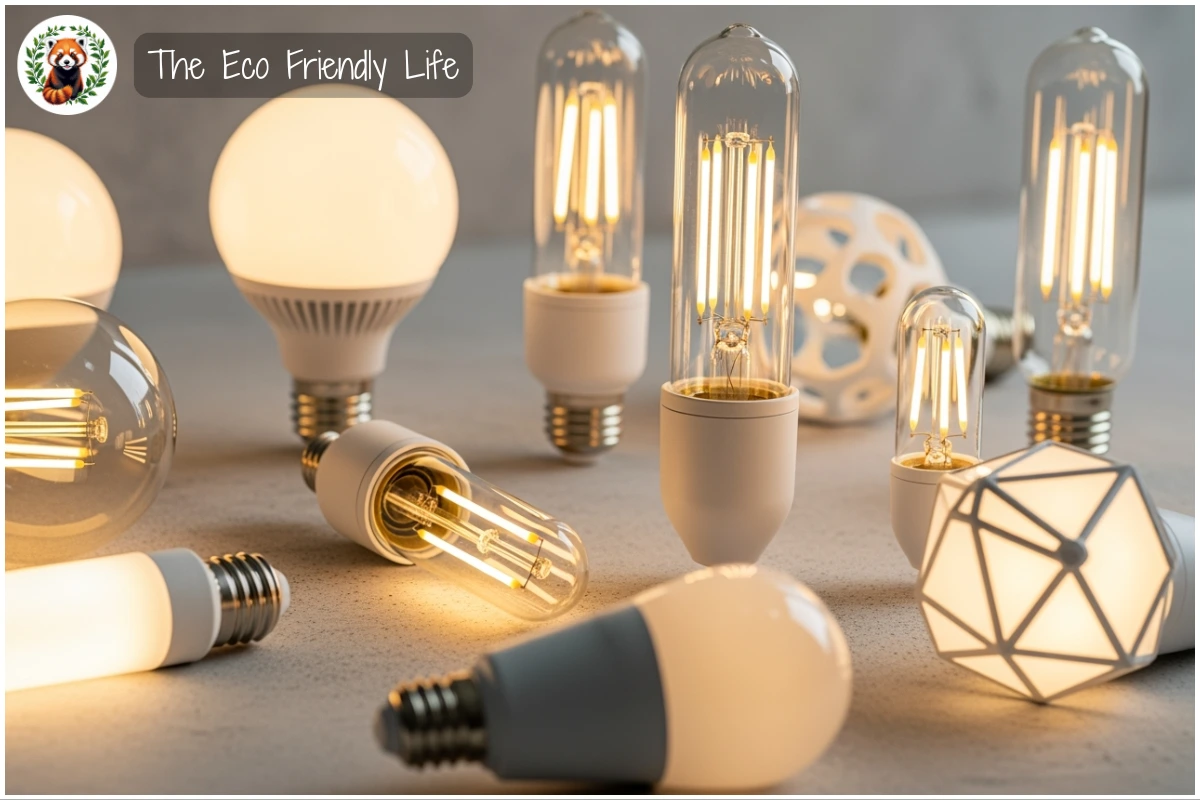
With efficient lighting in place, let’s tackle one of the biggest energy consumers in most homes—heating and cooling—with smart technology that does the work for you.
Smart Climate Control Solutions
Smart thermostats save automatically: Installing a smart thermostat is one of the most effective technological upgrades for reducing energy waste. These devices can reduce heating and cooling costs by 10-15% annually, learning your schedule and preferences to automatically adjust temperatures when you’re away or asleep. Unlike traditional thermostats, smart models use geofencing to detect when you leave home and return, ensuring you never waste energy heating or cooling an empty house.
Adaptive scheduling: Smart thermostats analyze your household patterns over time, creating customized temperature profiles that match your lifestyle. If you typically wake at 6:30 AM on weekdays but sleep until 8 AM on weekends, the system learns this pattern and adjusts accordingly—saving two hours of peak-time energy consumption without any manual programming.
Remote control convenience: Whether you’re at work or on vacation, smart thermostats let you adjust your home’s temperature from anywhere via smartphone apps. Unexpected weather changes or schedule modifications? No problem—simply open the app and make adjustments instantly, ensuring you never return to an uncomfortable home while also avoiding wasted energy.
Integration with other systems: Modern smart thermostats work seamlessly with voice assistants like Amazon Alexa and Google Assistant, allowing hands-free control. They can also integrate with other smart home devices, creating an interconnected ecosystem that optimizes your entire home’s energy use. Some utilities even offer rebates for smart thermostat installations, reducing your upfront investment.
Once you’ve optimized how you control your home’s climate, consider upgrading what creates that climate in the first place. But before we explore those bigger improvements, let me introduce you to two innovative retailers that can help you on your energy efficiency journey.
Retailers That Support the Planet – Our Product Recommendations
When upgrading your home’s energy efficiency, choosing the right products and retailers can make all the difference. Here are two recommendations that align perfectly with sustainable living.
Our Retailer Recommendation for Adults
Sensibo – Smart Climate Control Made Simple
Transform any air conditioner or heat pump into a smart, energy-saving device with Sensibo’s smart controllers. Their products use geofencing, 7-day scheduling, and AI-powered automation to ensure your HVAC system runs only when needed, potentially saving 10-15% on heating and cooling costs annually. Installation takes just minutes—plug it in, connect to WiFi, and control your home’s climate from anywhere using their intuitive smartphone app. Perfect for anyone looking to reduce energy waste without replacing existing equipment.
Our Retailer Recommendation for Kids/Families
Melissa & Doug – Eco-Conscious Educational Toys
Teaching the next generation about sustainability starts with play. Melissa & Doug creates high-quality, screen-free toys using FSC-certified sustainable materials, with a commitment to plant 10 million trees by 2030. Their Solar System Floor Puzzle offers 48 pieces of hands-on learning about space and our planet, sparking curiosity about the natural world in children ages 3-6. By choosing durable, timeless toys made from renewable materials, families teach kids about conservation while creating less waste—toys that can be passed down for generations rather than quickly discarded.
These retailers demonstrate that making sustainable choices doesn’t mean sacrificing quality or convenience—in fact, it often means getting better products that serve you longer. Now let’s explore more substantial upgrades that can transform your home’s energy performance.
Windows and Doors: Upgrading Your Barriers
Double glazing benefits: Upgrading to double-glazed windows represents a significant but worthwhile investment in home energy efficiency. These windows consist of two panes of glass separated by an air or gas-filled space, creating an insulating barrier that can reduce heat loss by up to 50% compared to single-pane windows. While the upfront cost is higher, double-glazed windows can prevent up to 30% of heat loss, making homes warmer in winter and cooler in summer.
Low-E glass technology: Low-emissivity (Low-E) glass features a transparent coating that reflects heat and cold while allowing natural light to pass through. This provides excellent insulation and solar protection, maintaining comfortable indoor temperatures year-round while protecting furniture, carpets, and curtains from fading due to UV exposure. Low-E glass can be used alone or combined with double glazing for maximum thermal efficiency.
Window treatments: Even without replacing windows, strategic use of curtains, blinds, and awnings significantly impacts energy efficiency. In cooler months, ensure curtains and blinds properly seal windows to prevent drafts. During warmer months, keep curtains closed during the day and consider external blinds or canvas awnings to block heat before it enters your home. These simple measures can substantially reduce heating and cooling loads.
Door upgrades: Energy-efficient exterior doors with proper sealing and insulation prevent substantial energy loss. Look for doors with thermal breaks in metal frames, weather stripping around the entire perimeter, and door sweeps at the bottom. Solid wood or fiberglass doors with insulated cores provide better thermal performance than hollow-core doors.
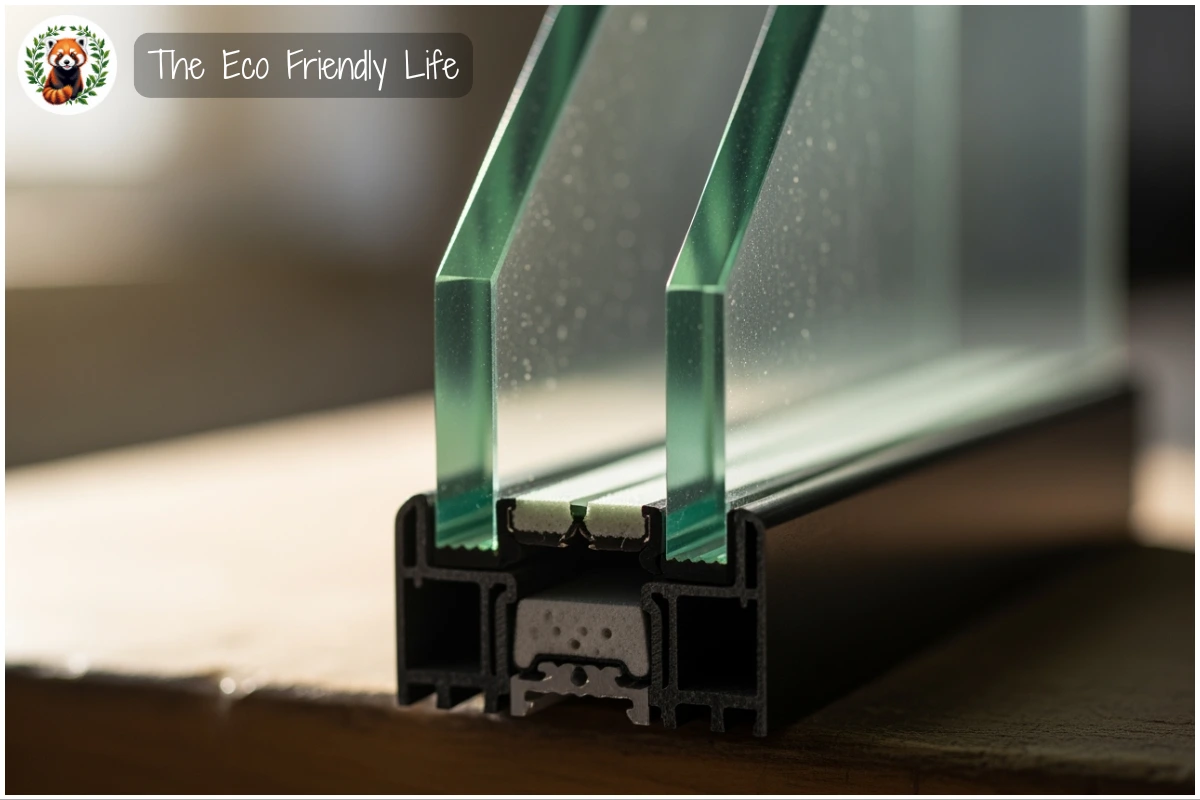
Beyond passive measures, active generation through renewable energy represents the ultimate step toward energy independence which we will get into in detail in future articles, but first let’s discuss practical steps you can implement immediately to start seeing savings today.
Practical Daily Tips You Can Action Today
Small daily actions compound into significant energy savings over time. Here’s a practical guide to changes you can implement immediately without any special tools or expertise.
| Action | How to Implement | Impact |
|---|---|---|
| Adjust thermostat settings | Set heating to 68°F (20°C) or lower in winter; cooling to 78°F (26°C) or higher in summer. Each degree adjustment saves 3-5% on energy bills. | Reduces heating/cooling costs while maintaining comfort; saves hundreds annually without sacrificing livability. |
| Wash clothes in cold water | Switch washing machine to cold water settings for most loads; modern detergents work effectively in cold temperatures. | Saves up to $115 per year by eliminating water heating energy; extends clothing life and reduces color fading. |
| Air-dry laundry | Hang clothes outside on a line or use indoor drying racks instead of electric dryers whenever possible. | Dryers consume massive energy; air-drying is completely free and better for fabric longevity. |
| Unplug vampire devices | Disconnect chargers, appliances, and electronics when not in use; use power strips to easily switch off multiple devices at once. | Eliminates standby power consumption which accounts for up to 23% of household electricity use. |
| Close doors and vents | Shut doors to unused rooms and close heating/cooling vents in those spaces; focus climate control on occupied areas only. | Reduces the volume of space requiring temperature control, cutting energy waste significantly. |
| Use natural ventilation | Open windows on opposite sides of your home during mild weather to create cross-breezes instead of using air conditioning. | Provides fresh air circulation and cooling without any energy cost during transitional seasons. |
| Cook efficiently | Use lids on pots, match pot sizes to burner sizes, and use microwaves or toasters for small portions instead of ovens. | Reduces cooking time and energy consumption while achieving the same results. |
| Optimize refrigerator settings | Set refrigerator to 37-40°F (3-4°C) and freezer to 0-5°F (-18 to -15°C); avoid placing hot items inside. | Maintains food safety while preventing the appliance from working harder than necessary. |
| Maximize natural light | Open curtains and blinds during daytime; position work areas near windows to reduce dependence on artificial lighting. | Reduces daytime electricity use while providing better quality light for activities and mood. |
| Run full loads only | Wait until dishwashers and washing machines are completely full before running cycles; select shortest appropriate programs. | Maximizes efficiency per load and reduces water and energy consumption per item cleaned. |
These actions require minimal effort but deliver measurable results when practiced consistently. Now let’s address some common questions about making your home more energy-efficient.
Frequently Asked Questions
How much can I realistically save by making my home energy-efficient?
Savings vary based on your current home condition and which improvements you implement, but most households see 15-30% reductions in energy bills. Installing insulation alone can cut heating and cooling costs by 45% or more, while comprehensive upgrades can save thousands of dollars annually.
Do I need to do everything at once?
Absolutely not. Start with the most cost-effective improvements like sealing air leaks, switching to LED bulbs, and adjusting your thermostat habits. These require minimal investment but deliver immediate results. Tackle bigger projects like insulation or window upgrades as your budget allows.
Will energy-efficient upgrades increase my home’s value?
Yes. Energy-efficient homes are increasingly desirable to buyers, often selling at a premium and attracting more interest. Documented improvements like insulation, efficient windows, and solar panels demonstrate lower operating costs and environmental responsibility, making your property more competitive in the real estate market.
Are these strategies relevant regardless of where I live?
While specific solutions may vary by climate—tropical regions prioritize cooling while temperate zones focus on heating—the fundamental principles of energy efficiency apply globally. Insulation, efficient lighting, smart climate control, and sealing air leaks benefit homes everywhere, though the specific R-values, materials, and approaches should be tailored to your local conditions.
Organizations to Support – Our Recommendations
If you’re passionate about energy efficiency beyond your own home, consider supporting these organizations working globally to advance sustainable energy solutions.
- Alliance to Save Energy: Founded in 1977, this bipartisan nonprofit coalition promotes energy efficiency policy across government, business, and consumer sectors. They’ve played integral roles in nearly every major U.S. energy efficiency achievement and work to double the country’s energy productivity while saving consumers billions annually. Support their mission toward a cleaner, more efficient energy future.
- Natural Resources Defense Council (NRDC): NRDC works to safeguard the earth through environmental law, science, and advocacy. Their energy program promotes clean energy solutions and energy efficiency policies that reduce carbon emissions and protect public health. Donate to NRDC to advance urgent climate action and defend our environment.
- Rocky Mountain Institute (RMI): RMI transforms global energy systems through market-driven solutions aligned with climate goals. Their research demonstrates how doubling energy efficiency improvements by 2030 would reduce global energy demand and CO2 emissions by almost one-third while enhancing energy security and creating millions of jobs. Support RMI’s work to accelerate the energy transition and make it faster, more affordable, and equitable.
These organizations leverage policy, research, and collaboration to create systemic change that amplifies individual actions into global impact.
Resources and Further Reading
Deepen your understanding and find additional guidance through these expert resources specifically focused on home energy efficiency.
- International Energy Agency – Energy Efficiency: The Decade for Action: The IEA provides comprehensive analysis showing that doubling efficiency improvement to above 4% annually by 2030 would reduce global energy demand by 190 exajoules and CO2 emissions by almost 11 gigatons—nearly one-third of current global emissions. Their reports offer detailed roadmaps for achieving ambitious efficiency goals.
- U.S. Department of Energy – Energy Saver Guide: This comprehensive resource covers everything from passive solar home design to specific technologies like heat pump water heaters and LED lighting. Their practical guides help homeowners understand both principles and implementation of energy efficiency improvements.
- Your Home – Australia’s Guide to Environmentally Sustainable Homes: This government resource provides detailed information on passive design principles, insulation, and climate-specific strategies for building or renovating energy-efficient homes. Their guidance is tailored to Australian climates but offers universal principles applicable globally.
These resources provide science-based information and practical guidance to support your energy efficiency journey.
Our Related Articles
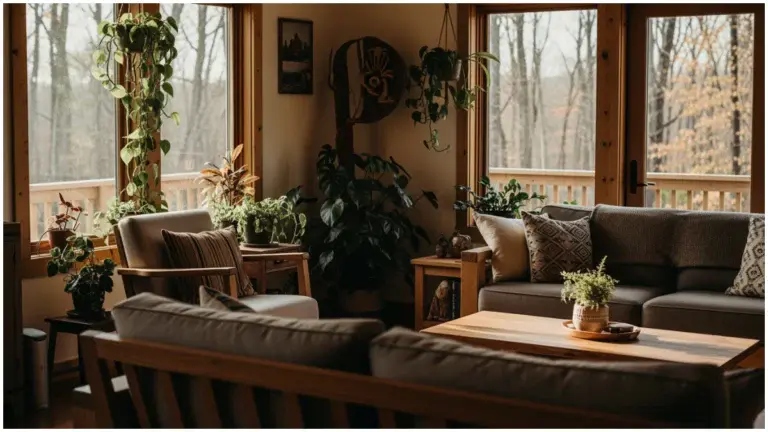
What Is A Sustainable Home?
A sustainable home represents far more than an architectural trend or a collection of eco-friendly features. It’s a living space thoughtfully designed to minimize environmental…
Read More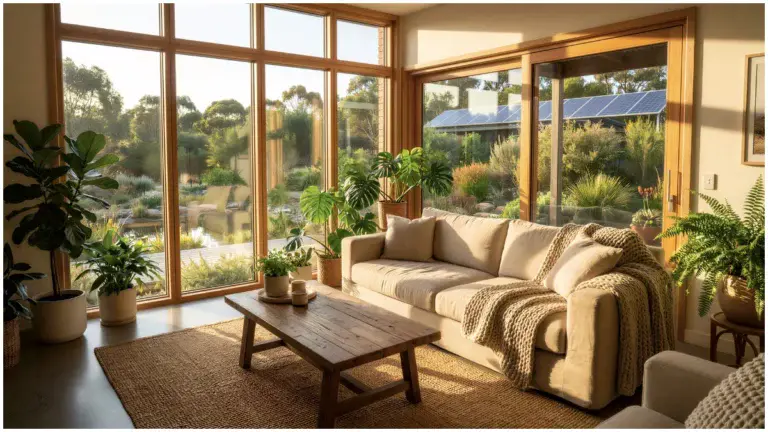
Eco-Friendly Insulation And Window Options
Keeping our homes comfortable while reducing our environmental impact has become one of the most important challenges of modern living. As energy costs rise and…
Read MoreConclusion
Transforming your home into an energy-efficient haven isn’t just about cutting costs—though the savings are substantial and immediate. It’s about creating a more comfortable living space, reducing your environmental impact, and contributing to a more sustainable future for everyone. From the simplest fixes like sealing drafts and switching to LED bulbs to more ambitious upgrades like installing insulation or smart climate control, every action matters.
The beauty of home energy efficiency is that you don’t need to do everything at once. Start where you are, use what you have, and make improvements as your budget and circumstances allow. Each step reduces your carbon footprint, lowers your energy bills, and makes your home more comfortable and valuable.
Now it’s your turn: What’s the first energy efficiency improvement you’re planning to tackle in your home? Have you already made changes that delivered impressive results? Share your experiences, challenges, and successes in the comments below—your insights could inspire someone else to take that first important step toward a more efficient, sustainable home.


